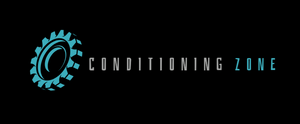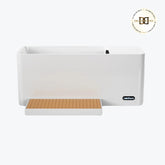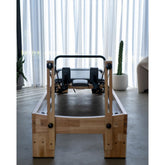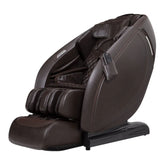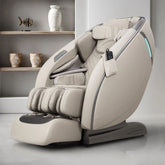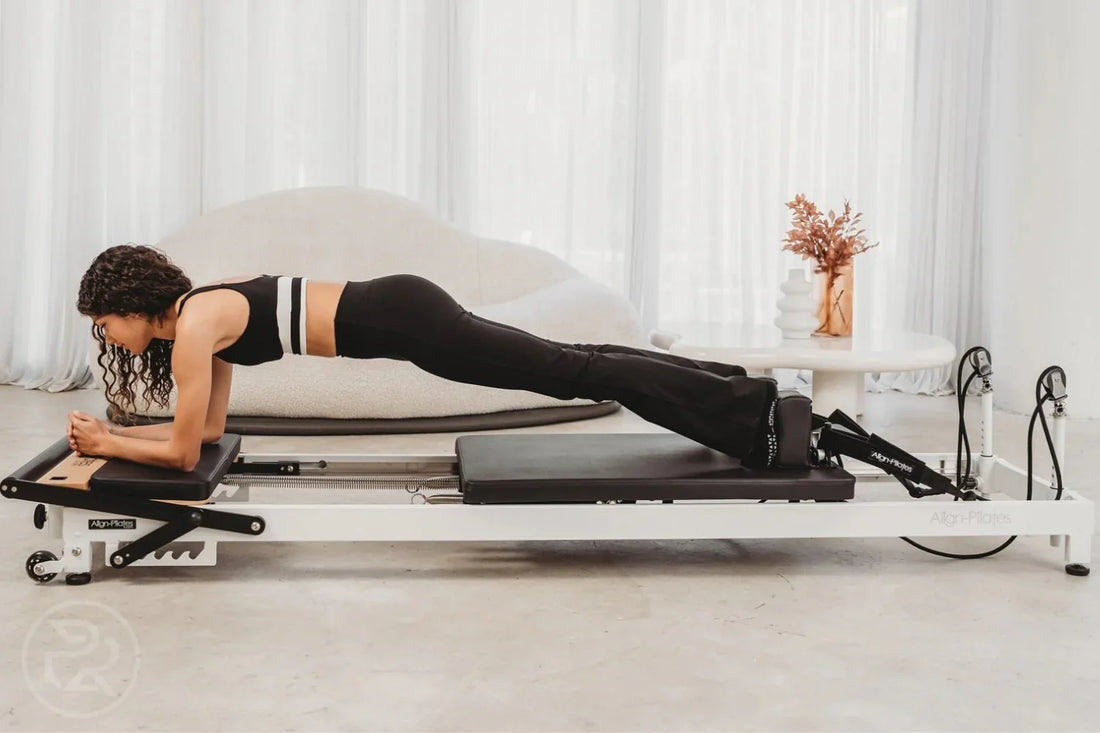Back pain is an unfortunate reality for millions of people worldwide. Whether it's caused by poor posture, muscle imbalances, or a sedentary lifestyle, finding effective ways to relieve back pain is a common struggle. One increasingly popular solution is using a Pilates Reformer for lower back pain.
This versatile equipment offers a variety of exercises designed to alleviate discomfort and strengthen the lower back. In this blog, we’ll delve into the benefits of using a Pilates Reformer for back pain relief and introduce some exercises to help you get started.
What is a Pilates Reformer?
A Pilates Reformer is an exercise machine created to enhance the principles of Pilates, a fitness method developed by Joseph Pilates in the early 20th century. The Reformer features a sliding platform (carriage) connected to springs, ropes, and pulleys, enabling resistance-based exercises that target different muscle groups.
How Reformer Pilates Can Help with Lower Back Pain
Is Reformer Pilates effective for back pain? Absolutely! Here are four ways Reformer Pilates can benefit those who regularly experience lower back pain:
1. Strengthens the Core
One of the main advantages of Reformer Pilates is its emphasis on core strength. A strong core is vital for maintaining proper body alignment and is the foundation of all body movements. Strengthening the core reduces the strain on other muscles, including those in the back.
Reformer exercises like the "Hundred" and "Stomach Massage" engage deep abdominal muscles that are crucial for supporting the spine and relieving lower back pressure. These muscles act as a natural brace for the spine, helping stabilize and support the lower back during everyday activities.
2. Improves Flexibility
Tight muscles often contribute to back pain, and the Reformer is an excellent tool for enhancing flexibility. Exercises such as the "Elephant" and "Long Stretch Series" stretch the muscles in the back, hamstrings, and hips, reducing tension and increasing your range of motion.
Improved flexibility can lead to better posture and less strain on the back muscles and hips. This is especially beneficial for individuals who spend long hours sitting or standing, as tight muscles can cause misalignments and worsen back pain.
3. Enhances Muscle Balance
Muscle imbalances in strength and flexibility are common contributors to back pain. Reformer Pilates promotes balanced muscle development by focusing on symmetry and alignment. Exercises like the "Leg Circles," "Frogs," and "Footwork" ensure all muscle groups are evenly strengthened, reducing the risk of injury and chronic pain.
By addressing these imbalances, Reformer Pilates helps create a more stable and resilient musculoskeletal system, which can help prevent future back pain episodes.
4. Decompresses the Spine
Certain Reformer exercises can help decompress the spine, providing relief from conditions like herniated discs and sciatica. The "Short Spine Massage" and "Spine Stretch Forward" are particularly effective for gently lengthening and articulating the spine, reducing compression on the vertebrae and alleviating nerve pain. If you’re experiencing back pain, these exercises should be performed under the guidance of a qualified instructor.
Spinal decompression exercises are essential for those dealing with chronic back pain due to compressed or irritated spinal discs. They help create space between the vertebrae and reduce pressure on the nerves.
Three Key Pilates Reformer Exercises for Lower Back Pain
Ready to get started? Here are three essential Pilates Reformer exercises to help manage and reduce back pain:
1. Pelvic Lift
Also known as the "Bridge" or "Glute Bridge," this exercise targets the glutes and hamstrings while engaging the core. By initiating the movement from the core and lifting the pelvis off the Reformer carriage, you can strengthen the muscles that support your lower back and pelvis.
2. Mermaid Stretch
The Mermaid Stretch focuses on lateral flexion of the spine, enhancing flexibility in the obliques and intercostal muscles. This exercise helps relieve tension in the lower back and improves overall spinal mobility. By reaching one arm overhead and bending the spine to the side, you can stretch the muscles along your side and increase your range of motion.
3. Knee Stretches
Knee stretches are dynamic exercises that challenge the core and lower back muscles. By maintaining a stable spine while moving the legs, you can improve back strength and flexibility. This exercise involves pulling the knees towards the chest while keeping the upper body stable, enhancing core coordination and strength.
